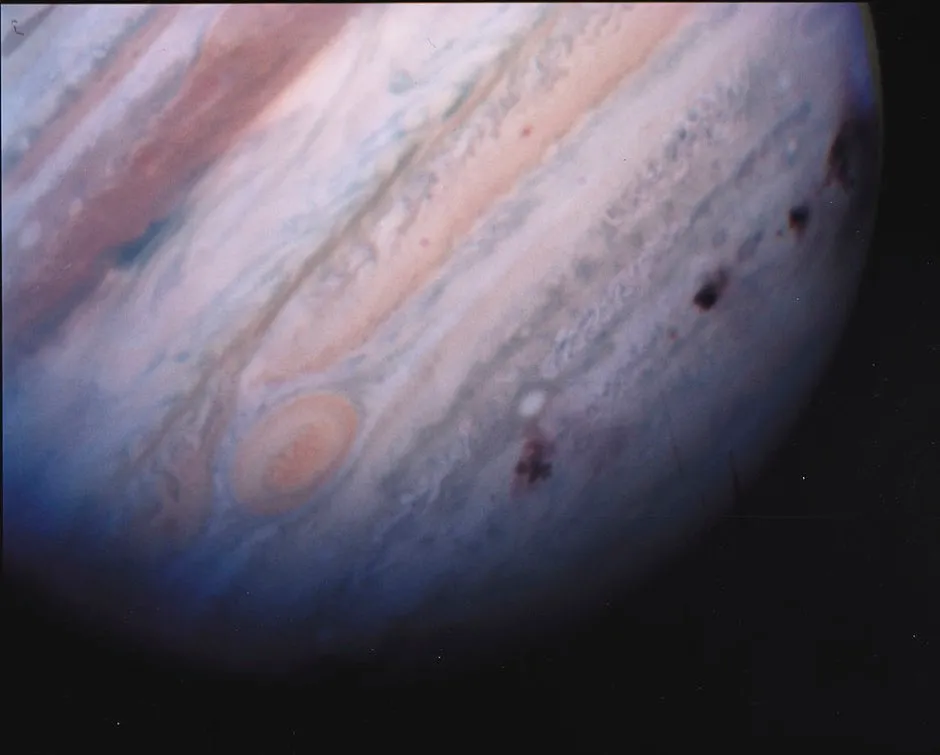
On 16 July 1994, telescopic eyes were turned on Jupiter as the first of 21 fragments of the broken-up comet, Shoemaker-Levy 9, crashed into the planet. Blotches scarred the atmosphere for a month before fading away.
Hubble Space Telescope observations provided a wealth of information about Jupiter’s atmosphere.
“Obvious waves emanated from the largest impacts, like ripples in a pond. From this, we could make deductions about the deep atmosphere and water below the clouds,” explains Dr Amy Simon, senior scientist for planetary atmospheres research at NASA Goddard.
While ground-based observatories were also involved, Hubble was the only one that could look across an entire range of wavelengths, irrespective of the time of day or weather conditions. Ultraviolet was particularly important for imaging dust and aerosols whipped up by the impacts.
“Hubble observed leftover debris and molecules high in the atmosphere for months, and even years, afterwards,” says Dr Simon.

Discover more about the Hubble Space Telescope:
- 10 of Hubble’s greatest discoveries
- Beautiful Hubble Space Telescope images you probably haven’t seen before
- 10 future space missions to look forward to
- Who really discovered Hubble’s Law?
From BBC Sky at Night Magazine:
- Hubble at 30: three decades of the famous space telescope
- 'How we serviced Hubble': Mike Massimino reveals all
- How Hubble’s successor the James Webb Space Telescope will observe the Universe
- Astronaut Kathy Sullivan on launching the famous space telescope
- What was wrong with Hubble’s mirror, and how was it fixed?
- Radio Astronomy Podcast: 30 years of the incredible space telescope
- How did the space telescope come about?
- What Hubble's launch meant to me, as an amateur astronomer
- How Hubble changed our view of the Universe
- Why did astronauts service the Hubble Space Telescope?
- How the Hubble Space Telescope is used to study exoplanets
- A history of the Hubble Space Telescope
